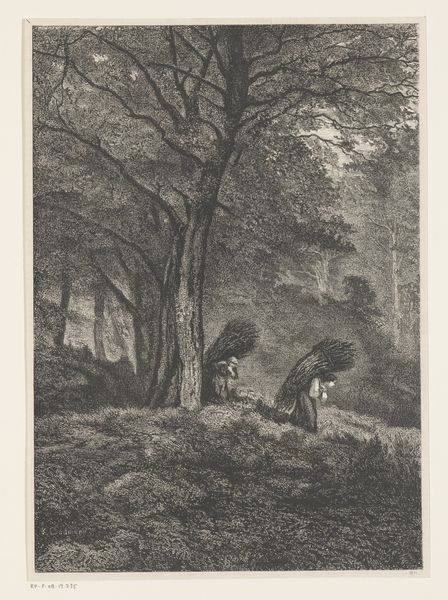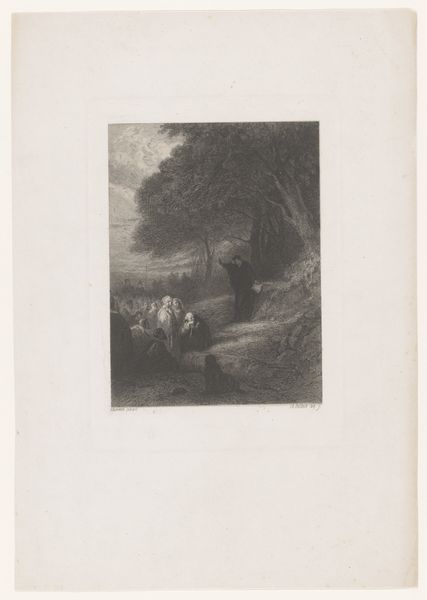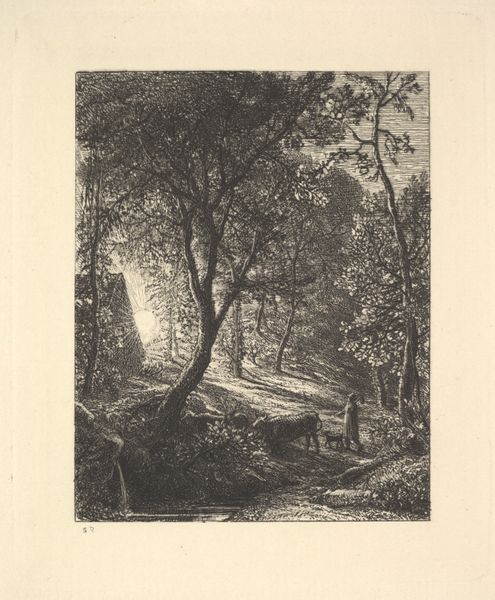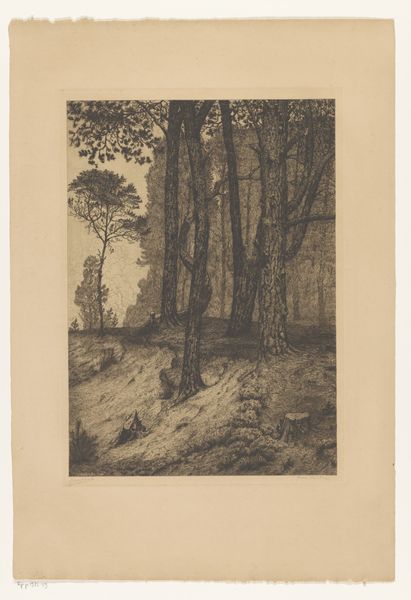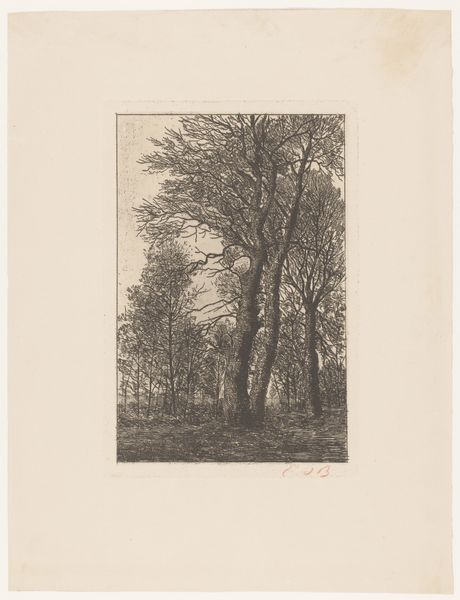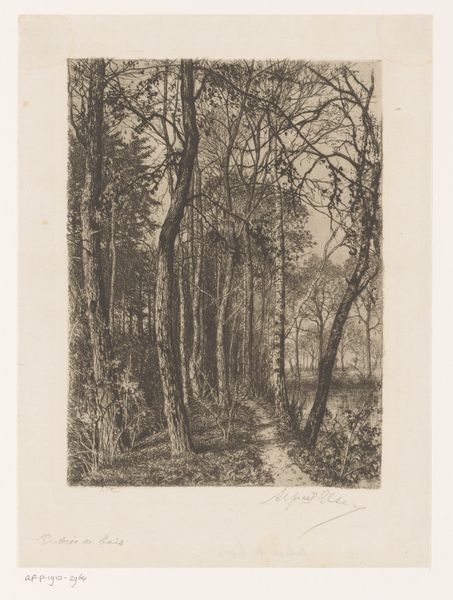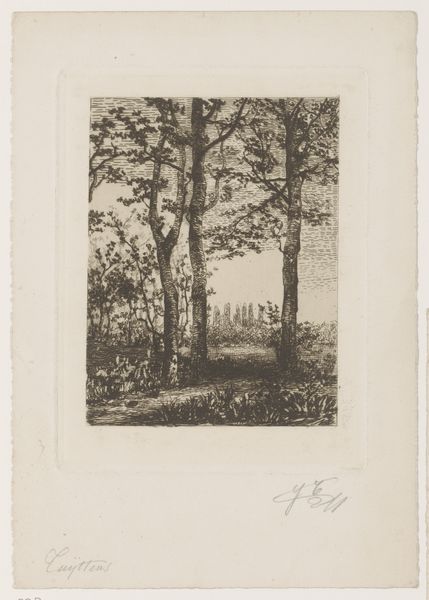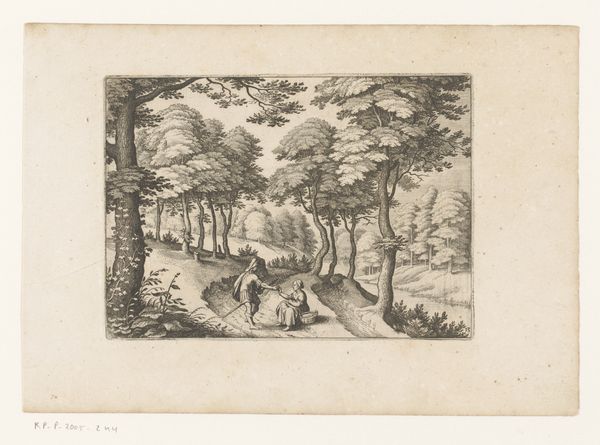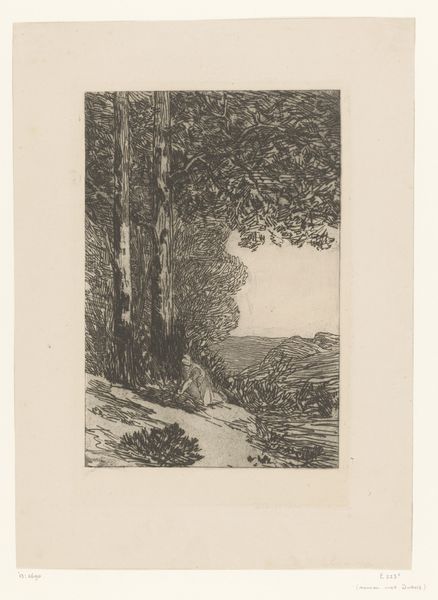
Op een laan onder hoge bomen verrast een jonge vrouw een man door zijn ogen te bedekken 1869
0:00
0:00
Dimensions: height 235 mm, width 164 mm
Copyright: Rijks Museum: Open Domain
Editor: So, this etching by Paulus Lauters from 1869, titled "In an avenue of tall trees, a young woman surprises a man by covering his eyes," definitely evokes a romantic mood. The figures seem dwarfed by the landscape. What's your take on it? Curator: It's interesting how Lauters uses this intimate scene to speak to broader social scripts around gender and power during the Romantic era. Think about it: the woman’s gesture, while seemingly playful, subtly disrupts the man's agency, albeit momentarily. How does this power dynamic resonate with the viewer, given the social constraints placed on women at the time? Editor: That's a perspective I hadn’t considered. I just saw it as a charming, if old-fashioned, depiction of courtship. Curator: The charm is deliberate, and effective! But what does it conceal? The setting, a secluded avenue, hints at a controlled space where these interactions play out. We might ask: who has access to these spaces, and who is excluded? What kind of societal expectations frame their encounter? Is this innocent fun or a challenge to the limited roles available for women? Editor: I see what you mean. Looking at it that way, it prompts more questions than answers. I hadn't considered the layers beneath the surface romance. Curator: Precisely. The visual language of Romanticism often masks deeper complexities around class, gender, and the individual’s relationship to the state. Hopefully, these interpretations encourage visitors to engage with historical narratives on multiple levels, dismantling preconceived ideas about the past. Editor: Thanks for highlighting those complexities. I definitely see this work with fresh eyes now.
Comments
No comments
Be the first to comment and join the conversation on the ultimate creative platform.
